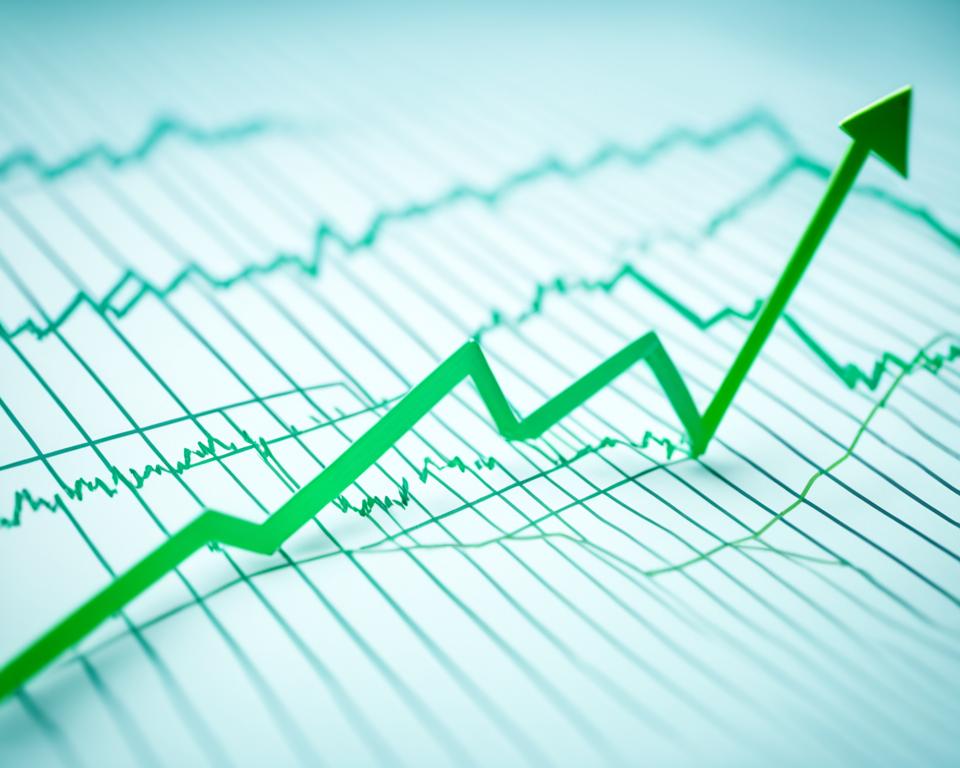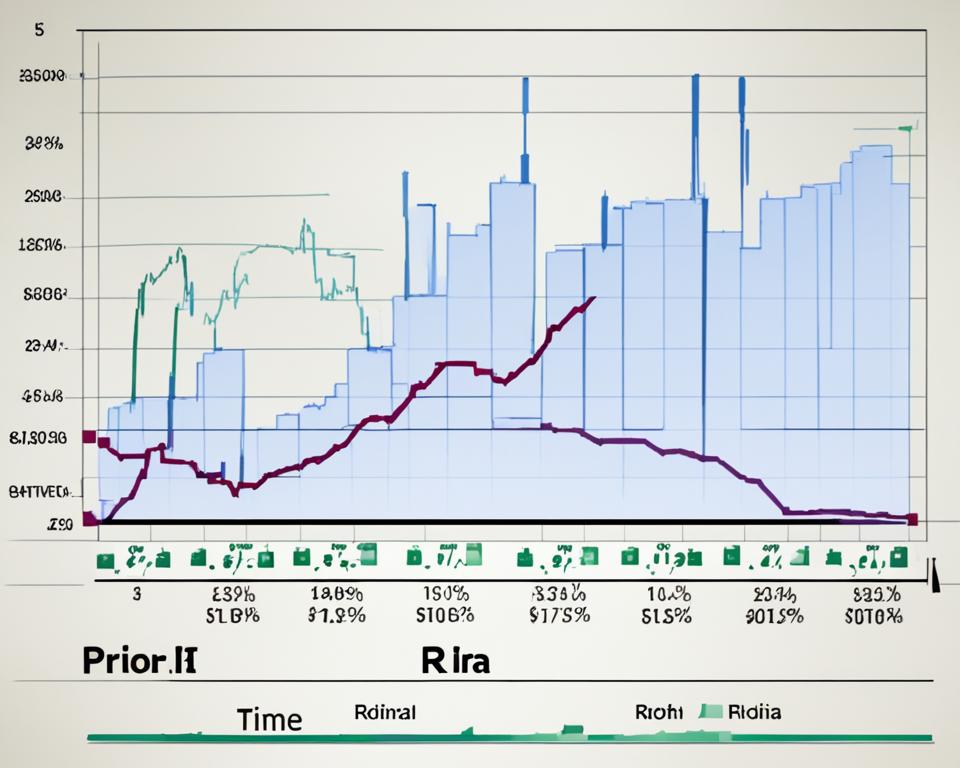Investors across the globe consistently leverage proven strategic measures to evaluate dividend stocks for safety and reliability. These measures ensure that their carefully selected investment choices yield sustained gains while keeping risks at bay. The process of safe dividend investing requires a meticulous examination of a company’s dividend ratios—an indicator of a company’s future ability to pay dividends.
Factors such as debt load, cash flow, earnings, and strategic plans are considered, along with the company’s dividend history and policy. Investors look for mature, non-growth-stage companies as these often distribute dividends, either as cash or as additional stock. The rates of these dividends are usually quoted as either a dollar amount per share or as a percentage of the stock’s current market price, also known as the dividend yield.
Investors must approach large dividend yields with caution, ensuring the durability and quality of dividends using ratios such as the dividend payout ratio, dividend coverage ratio, free cash flow to equity (FCFE), and Net Debt to EBITDA. Moreover, a low dividend payout ratio is often preferred as it implies the potential for maintaining or increasing dividend payouts over the long term. The process to evaluate dividend stocks for safety is indeed a healthy mix of the company’s financial resilience and market positioning, forming the foundation for reliable dividend stock criteria.
Key Takeaways
- Investors use strategic measures to evaluate dividend stocks for safety and reliable dividend stock criteria.
- Dividend ratios, which indicate a company’s future ability to pay dividends, are a crucial factor in safe dividend investing.
- Mature, non-growth-stage companies often distribute dividends, making them preferable for investors.
- In evaluating a company’s dividend safety, quantitative measures such as the dividend payout ratio, dividend coverage ratio, FCFE, and Net Debt to EBITDA are used.
- A low dividend payout ratio typically signals the potential for maintaining or increasing dividend payouts over the long term.
The Role of Dividend Ratios in Stock Safety Evaluation
Dividend ratios have long served as an investor’s reliable compass in the unpredictable landscape of stock markets. Known for their pivotal role in the stock safety evaluation, these underpinnings of financial health often signal an entity’s ability to maintain or increase dividends in the future, amplifying investor confidence.
Understanding the Dividend Payout Ratio
As the first line of analysis, the dividend payout ratio helps investors fathom what fraction of corporate earnings is being directed towards shareholder dividends. A ratio below 50% usually acts as an indicator of stability and growth potential, suggesting that a sizeable chunk of the profits is being plowed back for business expansion.
Assessing the Dividend Coverage Ratio
Another important parameter in the investor’s toolkit is the dividend coverage ratio. It signifies how many times a company can cover its dividend payments using its net earnings. A higher ratio, therefore, instil a sense of security among the investors as it implies a greater capacity of the company to uphold its dividend commitments.
Analyzing Free Cash Flow to Equity (FCFE)
Close on the heels of dividend coverage comes the ever-important free cash flow to equity (FCFE). This ratio sketches a detailed picture of the capital pool after paying off the company’s expenses and debts, which is earmarked for the shareholders. High FCFE values corroborate the genuineness of dividend payments, consolidating the trust among the investors.
Net Debt to EBITDA as a Leverage Indicator
Lastly, the Net Debt to EBITDA ratio takes a hard look at the company’s leverage situation, dissecting its inherent ability to juggle and manage its debt commitments. An attractive investment opportunity is often encoded in lower ratios, a sign of less debt and thus less financial risk during turbulent times.
| Dividend Ratio | Desired Value | Investment Implication |
|---|---|---|
| Dividend Payout Ratio | Below 50% | Indicates stability and growth potential |
| Dividend Coverage Ratio | High | Reflects ability to maintain dividends |
| Free Cash Flow to Equity (FCFE) | High | Assures dividends are funded by available cash |
| Net Debt to EBITDA | Low | Suggests minimal debt, enhancing investment appeal |
A strategic combination of these measurements would lead to a holistic view, enabling investors to draw nuanced insights about the safety quotient of their dividend stocks.
The Principle of Dividend Yield Assessment
Delving into the complexities of dividend yield assessment, it’s essential to draw a stark distinction between the allure of high-yield dividends and the underlying risks they might mask. Secure dividend stock picks hinge heavily on a pragmatic balance between pursuing attractive yields and safeguarding against potential financial pitfalls. Let’s delve into the foundational steps of a meticulous dividend yield assessment.
Comparing Dividend Yields with U.S. Treasury Yields
At the forefront of assessing dividend stock risk, comparing a stock’s dividend yield—calculated as the annual dividend per share over the stock price—with benchmarks like U.S. Treasury yields serves as a critical initial evaluation. Stocks offering a dividend yield surpassing that of U.S. Treasury yields might appear as an enticing high-yield investment. However, it signals a cue for investors to probe deeper, to decipher the longevity and sustainability of such dividend yields.
Assessing Dividend Yield Sustainability
But how can one ensure the sustainability of such high-yielding dividends? The answer lies in implementing an in-depth analysis of a series of dividend ratios. Complementing the chase for high-yield dividends with a scrupulous exploration of these dividend ratios helps ascertain whether the attractive yield is indeed a secure investment opportunity or a clandestine fiscal danger. A company’s operational and financial health examined in conjunction with its dividend yield provides a comprehensive perspective, cushioning against dividends that might falter under economic duress.
Let’s conceptualize this process with an illustrative table:
| Steps in Dividend Yield Assessment | Description |
|---|---|
| Compare with U.S. Treasury Yields | Analyze if the dividend yield is higher than the U.S. Treasury yield |
| Inject Dividend Ratios Analysis | Incorporate a thorough analysis of dividend ratios beyond the yield comparison |
| Examine Operational and Financial Health | Assess the company’s financial robustness, ensuring it can sustain dividends over an extended period |
As an ideal takeaway, the blend of strategic comparison, rigorous ratio analysis, and health assessment is the recipe for conducting a comprehensive dividend yield assessment, giving you a head start in identifying secure dividend stock picks.
How to Evaluate Dividend Stocks Using Company Financials
When investors seek to evaluate dividend stocks for safety, a meticulous perusal of a company’s financial health is vital. Understanding the financials can provide a clear indication of a company’s capacity to uphold consistent dividend payouts, thereby offering a degree of investment security. This examination usually falls under two broad subdivisions: earnings and cash flow, and the company’s debt levels.
Examining Earnings and Cash Flow for Dividend Support
Company earnings and cash flow are among the most potent indicators of its ability to maintain or grow dividend payments. A steady stream of earnings and an ample cash flow depict a company with a robust dividend potential. Through dividend stock analysis, investors can observe that a company with a steady revenue flow and healthy cash reserves can more readily afford consistent dividends. This means that even during periods of financial hiccups, these companies have a safety net—making their dividend stocks a safer bet for investors.
Importance of Low Debt Levels on Dividend Reliability
Additionally, a company’s debt levels also play a crucial part in determining its dividend reliability. Companies laden down by high debts carry a higher risk element. Tied down by interest and principal payments, such companies might find it challenging to maintain regular dividends in the face of unfavorable economic climates. Therefore, companies with low debt levels paint a more appealing image to the investors. With well-provided earnings, such companies collectively show promise in maintaining a sustainable dividend payout. Resultantly, investors who are concerned with the safety of their dividends often opt for such companies when diversifying their portfolios.
Assessing Dividend Stock Risk with Margin of Safety Analysis
The concept of ‘margin of safety’ is pivotal in dividend investing. It serves as a protective buffer that ensures dividend stability against market volatility or unforeseen declines in a company’s financial performance. This fundamental element can notably enhance the longevity of an investor’s dividend income stream.
Identifying Undervalued Dividend Stocks
Reaping the benefits of a margin of safety in dividend investing often involves the identification of undervalued dividend stocks. These are stocks whose prices are below their intrinsic values, revealing an attractive discrepancy. Savvy investors seize these opportunities, purchasing the stocks at discounted rates. Such stocks provide a cushion or margin of safety, increasing the investor’s likelihood of securing returns even if the market conditions deteriorate. Their underlying resilience and price-to-dividend ratio make them appealing prospects for risk-averse, income-focused investors.
Determining Adequate Earnings Coverage for Dividend Payments
A critical part of this strategy is assessing a company’s earnings coverage for dividend payments. An earnings surplus relative to dividends is indicative of a healthy margin of safety. A sufficient margins of safety suggests that the company has adequate earnings to cover the dividends, even in the event of an economic downturn. Therefore, assessing dividend stock risk involves a careful review of a company’s financial statements, paying close attention to its earnings to dividend ratio. This analysis allows investors to manage potential dividend risks prudently and choose stocks that can sustain dividends throughout economic cycles.
In conclusion, a systematic approach to evaluating dividend stock risk using a margin of safety analysis can provide valuable insights for investors. By identifying undervalued stocks and ensuring earnings sufficiently cover dividend payments, investors can reduce their exposure to investment risks and enjoy consistent dividend streams.
Evaluate Dividend Stocks for Safety Through Industry Comparison
When considering dividend stocks, a comprehensive view that includes industry or sector comparisons is essential. Understanding each sector’s typical dividend payout practices, along with a relative comparison of the target company’s dividend ratios against similar companies, can paint a clearer picture of the stocks’ safety.
Understanding Sector-Specific Dividend Payout Practices
Each industry tends to have its own set of dividend payout norms. For instance, the utilities sector typically offers higher dividend yields due to their stable earnings profile. It’s crucial to be aware of these sector-specific practices to evaluate dividend stocks accurately. Knowledge about industry norms and understanding them enables investors to evaluate dividend stocks for safety effectively.
Benchmarking Dividend Ratios Against Similar Companies
A practical strategy in dividend stock evaluation involves performance comparison within the same sector. Comparing a company’s dividend ratios against its industry peers can illuminate the strengths or weaknesses of a company’s dividend sustainability. Such industry comparisons enable investors to ground their decisions in realism, based on sector-specific norms and providing logical expectations about their dividend stocks’ safety and growth potential.
Thus, a diligent industry-focused evaluation can significantly inform your decisions, as it equips you with the necessary market insights and benchmark data for an informed dividend stock investment.
Deciphering the Sustainability of High Dividend Yields
Investors find high dividend yields to be highly appealing, serving as a beacon of potential returns. However, in the world of safe dividend investing, yielding to the allure of these lucrative rates without performing meticulous analysis can be misleading. Hence, a brilliant investor distinguishes the risks that accompany these yields before embarking on such investment decisions.

Distinguishing Between High Yields and High Risks
The enticement of high dividends emanates from the substantial returns that they promise. While these yields might look enticing, it’s crucial to remember that high dividend yields might be indicative of financial instability or a depreciating stock value. Investors should thus be cautious while dealing with such conditions. Observing payout ratios, assessing the company’s reinvestment practices, and gauging its growth prospects are some measures that can be employed to distinguish between rewarding dividends and those associated with high risks.
Identifying Red Flags in High Dividend Payouts
An investigatory approach towards high dividend payouts is essential in identifying potential dividend risks. Red flags such as dividends that are not conveniently backed by earnings, or companies taking on extra debts to pay dividends to shareholders, demand closer attention from investors. Such telltale signs help investors to avoid falling into potential dividend traps. By targeting these issues, investors can secure their asset portfolios and ensure the viability of their high-yield dividend investments.
| Indicators | Cautions | Recommendations |
|---|---|---|
| Payout Ratio | High payout ratio can indicate disproportionate dividend distribution. | Look for a balance in company’s profit versus the dividend payout. |
| Company Reinvestment | Low reinvestment may signify issues with the company’s growth and stock value. | Ensure the company has a healthy reinvestment plan or strategy. |
| Growth Prospects | Falling growth rates might reflect financial instability. | Companies with steady or rising growth rates are preferred. |
Secure Dividend Stock Picks: Dividend Growth and Company Potential
In the world of secure dividend stock picks, two key elements attract the attention of shrewd investors—dividend growth and the company’s potential for dividends. Landing on the perfect investment requires a nuanced understanding of a company’s dividend history and an informed projection of its future dividend capabilities. To ensure optimal returns, a balance must be struck between stable income generation and growth opportunities. Let’s delve deeper into these factors.
Looking for a History of Dividend Increases
Investors searching for promising dividend stock picks are greatly influenced by a company’s track record of dividend disbursements. Notably, companies consistently increasing their dividend over the years are viewed favorably. Such commitment to shareholder returns is often an encouraging sign of corporate financial stability and sound management. This trend is a pleasing sight for investors seeking a steady income flow.
Evaluating the Potential for Future Dividend Growth
Besides historical payouts, the projected potential for future dividend growth plays a critical role in investing decisions. Forward-looking investors probe into aspects such as earnings growth, cash flow trends, capital expenditures, and debt levels. Companies exhibiting positive performance indicators, coupled with strategic plans incorporating shareholder dividends, typically secure a coveted spot in a savvy investor’s portfolio. By forecasting dividend growth, investors hope to strike a balance between immediate income generation and future profit growth.
| Company Parameters | Historical Performance | Future Potential |
|---|---|---|
| Earnings Growth | Steady over last five years | Projecting positive growth |
| Cash Flow Trends | Consistently Positive | Promising upward trend |
| Capital Expenditures | Managed judiciously | Strategically planned for future expansion |
| Debt Levels | Managed effectively in the past | Low debt forecasted |
For investors, the goal is to identify and secure dividend stock picks that provide not only a steady stream of income but also a prospect of appreciating stock value. By doing so, they aim to maximize overall returns—combining secure dividends with the potential for capital gains.
Reliable Dividend Stock Criteria: Beyond the Numbers
Investors aiming for the most reliable dividend stocks must look beyond just numbers to make a well-informed decision. Qualitative factors, specifically a company’s dividend distribution strategy, its choice between stock and cash dividends, are equally consequential in selecting such stocks. These aspects often enable investors to assess more thoroughly the company’s financial health and predict potential returns and tax implications.
Assessing Management’s Dividend Distribution Strategy
Management’s approach to dividends, especially their method for incorporating dividends into overall plans, is a significant determinant of a company’s financial health. By evaluating management’s dividend distribution strategy, investors can discern whether dividends are reflective of corporate prosperity or mere compensatory moves during periods of sluggish growth. Furthermore, the way the management communicates about dividends reveal their transparency, commitment, and strategic thinking—all crucial elements considering when looking for reliable dividend stock criteria.
Understanding the Impact of Stock Dividends vs. Cash Dividends
Different types of dividends, mainly stock dividends and cash dividends, present distinct implications for an investor’s overall return and tax liability. While stock dividends increase the number of shares owned, cash dividends provide immediate income. Understanding the advantages and potential pitfalls of both types is crucial in forming a robust investment strategy.
| Stock Dividends | Cash Dividends | |
|---|---|---|
| Benefits | Increases the number of shares owned without immediately affecting taxes | Provides immediate income |
| Risks | Could dilute earnings per share if not managed properly | Might pose tax implications in the year received |
The choice between stock dividends and cash dividends significantly influences the investor’s total returns, and this understanding aids in identifying truly reliable dividend stocks. Hence, evaluating these qualitative aspects is indeed as important as quantitative criteria for a comprehensive analysis of potential investments.
Creating a Balanced Portfolio for Safe Dividend Investing
To ensure safe dividend investing, a balanced portfolio is not an option but an absolute necessity. Crafting such a portfolio necessitates the implementation of diversification strategies and effective reinvestment plans. To mitigate risk, investments must span across various sectors and a range of market caps. Strike a balance by combining dividend stocks from mature, high-yield companies with those from growth-oriented firms that possess the potential for increasing dividends.

Diversification Strategies for Dividend Stocks
A key to achieving a resilient portfolio is the inclusion of an assortment of dividend stocks. To emphasize the importance of diversification, consider this table that presents hypothetical portfolios. Notice how Portfolio B, with a diversified collection from different sectors, outperforms Portfolio A, concentrated within a single sector, during unusual market conditions.
| Portfolio | Sector Variety | Performance During Market Volatility |
|---|---|---|
| A | Concentrated in Tech Sector | Poor |
| B | Diversified Across Multiple Sectors | Superior |
Note: This table is hypothetical and intended to illustrate the concept, actual results may vary according to market conditions and individual investment choices.
Incorporating Dividend Reinvestment Plans (DRIPs)
Investors can boost their income by strategically incorporating Dividend Reinvestment Plans (DRIPs) into their portfolios. DRIPs enable dividend reinvestment, allowing investors to buy more shares automatically, compounding returns over time. Reinforcing your portfolio with DRIPs can lead to a significant improvement in wealth growth over time.
Simply put, a balanced portfolio which showcases diversification and comprises dividend reinvestment plans lays the foundation for safe and lucrative dividend investing. This savvy blend of income-generating stocks, backed by effective reinvestment strategies, truly represents an investor-friendly approach to capital appreciation and dividend income.
Conclusion
As we conclude our insight-packed journey into understanding smart ways to evaluate dividend stocks for safety, it becomes clear that there is a multitude of factors at play. The process requires a keen eye for detail and a robust understanding of essential financial principles, thereby making it both an art and science where information reigns supreme.
Summarizing Key Indicators of Dividend Stock Safety
To safeguard your investments from unforeseen market volatility, several key safety indicators come into play. The cornerstone of safe investing lies in meticulously scrutinizing these indicators such as dividend payout and coverage ratios, Free Cash Flow to Equity (FCFE), and Net Debt to EBITDA. Furthermore, the concept of dividend yield benchmarks and the all-important margin of safety serve as a protective buffer in your dividend analysis process.
Final Thoughts on Optimizing Dividend Stock Selection
Mastering the art of evaluating dividend stocks for safety involves more than just an intimate knowledge of financial ratios. Broader strategic considerations, such as comparing industry-specific payouts, interpreting management strategies, and the uptake of diversification strategies, also hold immense significance. Optimizing the dividend stock selection becomes a tightrope walk between statistical evaluation and qualitative scrutiny, all aimed at a balanced approach. In conclusion, by understanding the inner workings of dividend investing, investors can look forward to crafting a customized portfolio that generates robust returns while minimizing risk, reflecting their financial goals and risk tolerance.
FAQ
How do investors evaluate dividend stocks for safety and reliability?
Investors look into dividend ratios such as dividend payout ratio, dividend coverage ratio, Free Cash Flow to Equity (FCFE), and Net Debt to EBITDA. These indicators provide valuable insights into the financial strength of a company, thus aiding in the selection of secure and reliable dividend stocks.
What roles do Dividend Ratios play in Stock Safety Evaluation?
Dividend ratios offer a measure of a company’s dividend-paying capacity. A lower dividend payout ratio indicates a potential for maintaining or increasing dividends, while a higher dividend coverage ratio signifies that the company can comfortably cover dividends from its net income. Both Free Cash Flow to Equity (FCFE) and Net Debt to EBITDA provide insights into the financial health of a company and its capacity to sustain dividends.
How is the principle of Dividend Yield Assessment applied?
Dividend yield is evaluated against benchmarks like U.S. Treasury yields. Any stock offering a dividend yield above the U.S. Treasury yield should be investigated for sustainability and the company’s ability to maintain such performance over the long term.
How does analyzing company financials help evaluate dividend stocks?
Examination of earnings, cash flow, and debt levels helps determine a company’s capacity to support its dividend distributions. Companies with robust earnings and ample cash flow are likely to have strong dividend potential. High debt levels, on the other hand, may indicate risks to dividend sustainability.
How is margin of safety utilized in assessing dividend stock risk?
Margin of safety provides a buffer against market volatility or corporate issues that may affect dividend stability. Investors look for undervalued stocks with dividends priced below their intrinsic values, offering a margin of safety and increasing the likelihood of securing returns in fluctuating market conditions.
How can an investor decipher the sustainability of high dividend yields?
High dividend yield might indicate potential risks, such as financial vulnerability or a declining stock price. Therefore, high yields should be evaluated against factors like payout ratios, reinvestment strategies, and growth prospects to distinguish between genuinely rewarding yields and risky ones.
What factors determine secure dividend stock picks?
A history of consistent and increasing dividends, promising earnings growth, favorable cash flow trends, prudent capital expenditures, and manageable debt levels are paramount in choosing secure dividend stocks. A company’s strategic plans, including those for shareholder compensation, also play a significant role.
What constitutes reliable dividend stock criteria beyond numerical analysis?
The company’s management and their dividend distribution strategy, types of dividends (stock vs. cash), and their tax implications, are key aspects to consider alongside quantitative measures. They provide insights into whether dividends signify robust financial health or are a mere placebo deployed during slow growth phases.
How does creating a balanced portfolio ensure safe dividend investing?
A balanced portfolio integrates both mature companies offering high-yield dividends and growth-oriented firms with potential for increasing dividends. Diversification across multiple sectors and market caps, combined with Dividend Reinvestment Plans (DRIPs), helps mitigate risk and enhances portfolio resilience, thus ensuring safe dividend investing.












